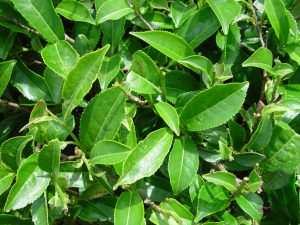
HEALTH BENEFITS OF CAMELLIA SINENSIS
Health benefits of Camellia sinensis. This plant is commonly referred to as the tea plant, is the source of black, green, oolong, and white tea. The oil extracted from its leaves is called a leaf extract. Due to the numerous health advantages of tea, particularly green tea, camellia sinensis, or tea leaf extract, has become more and more popular.
HEALTH BENEFITS OF CAMELLIA SINENSIS
The extract offers concentrated forms of the plant’s beneficial chemicals, which you may manufacture yourself or purchase as a supplement. The same bioactive substances that give tea its flavor, aroma, astringency, taste, and therapeutic benefits are abundant in Camellia sinensis leaf extract.
1. impacts on the health of the skin

Because of its beneficial effects on skin health and attractiveness, camellia sinensis leaf extract has been used in the cosmetics industry for a long time. Because EGCG has antioxidant properties, it may shield the skin from UVR damage, which can cause sunburn, premature aging, and nonmelanoma skin cancer to develop. Additionally, studies indicate that using the extract topically and ingesting it improves skin suppleness, hydration, density, and blood flow while decreasing scaling.
2. blood triglycerides and cholesterol
According to studies, by decreasing their absorption, the extract may lower levels of triglycerides, total cholesterol, and LDL (bad) cholesterol.
3. arterial plaque

The extract contains catechins that help stop plaque from accumulating and blocking your arteries by reducing the oxidation of LDL (bad) cholesterol.
4. blood pressure level
Through enhancing blood vessel activity and encouraging blood vessel relaxation, the extract may reduce blood pressure.
5. Effects of anticancer

The extract’s catechins, especially EGCG, are primarily responsible for its anti-cancer effects. According to research conducted on animals and in test tubes, EGCG protects against cancer by causing malignant cells to undergo programmed cell death, or apoptosis. Additionally, by blocking angiogenesis, it might aid in halting the growth and dissemination of tumors. New blood arteries that might otherwise nourish malignant cells are growing in this way.
6. The immune system
Two essential substances for strengthening your body’s immune system are L-theanine and EGCG. L-theanine may increase T-cell production, according to studies. One kind of white blood cell that combats illness is the T cell. As a result, it might be crucial in the fight against infections, allergies, and hypersensitivity reactions. Additionally, studies indicate that by reducing the synthesis of numerous inflammatory markers, EGCG may help the body regain its immunological equilibrium in a variety of autoimmune disorders.
7. Anxiety and tension

The extract’s ability to reduce stress is mostly due to L-theanine. By raising dopamine and serotonin levels, L-theanine has been shown to encourage relaxation and lessen anxiety. These two signaling molecules, which are produced by brain cells, control motivation and happiness, among other things. Researchers utilize alpha brain waves as a gauge of relaxation, and L-theanine seems to enhance their production. They are linked to a state of mental clarity and alertness.
Summary
Despite being generally well accepted and thought to be safe, Camellia sinensis leaf extract has occasionally been reported to cause undesirable side effects. Its caffeine level, for instance, might cause headaches and jitters.
Researchers have also discovered a link between increased coffee use during pregnancy and an increased risk of low birth weight and pregnancy loss. The leaf extract of Camellia sinensis can also cause moderate side effects including redness or allergy and digestive issues like nausea and diarrhea.